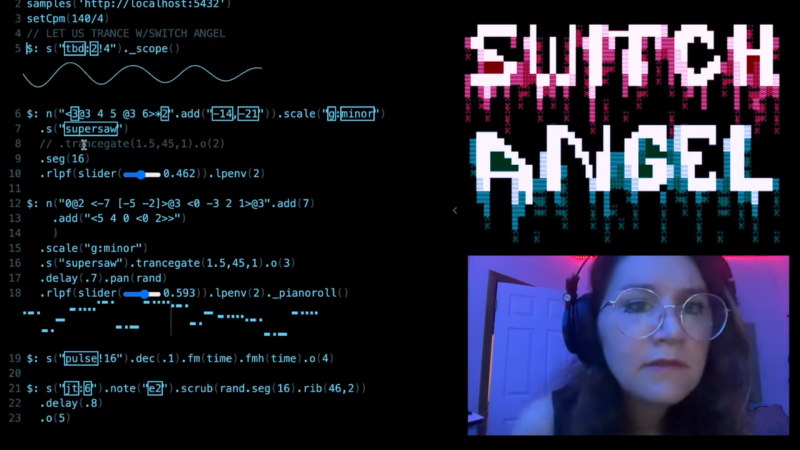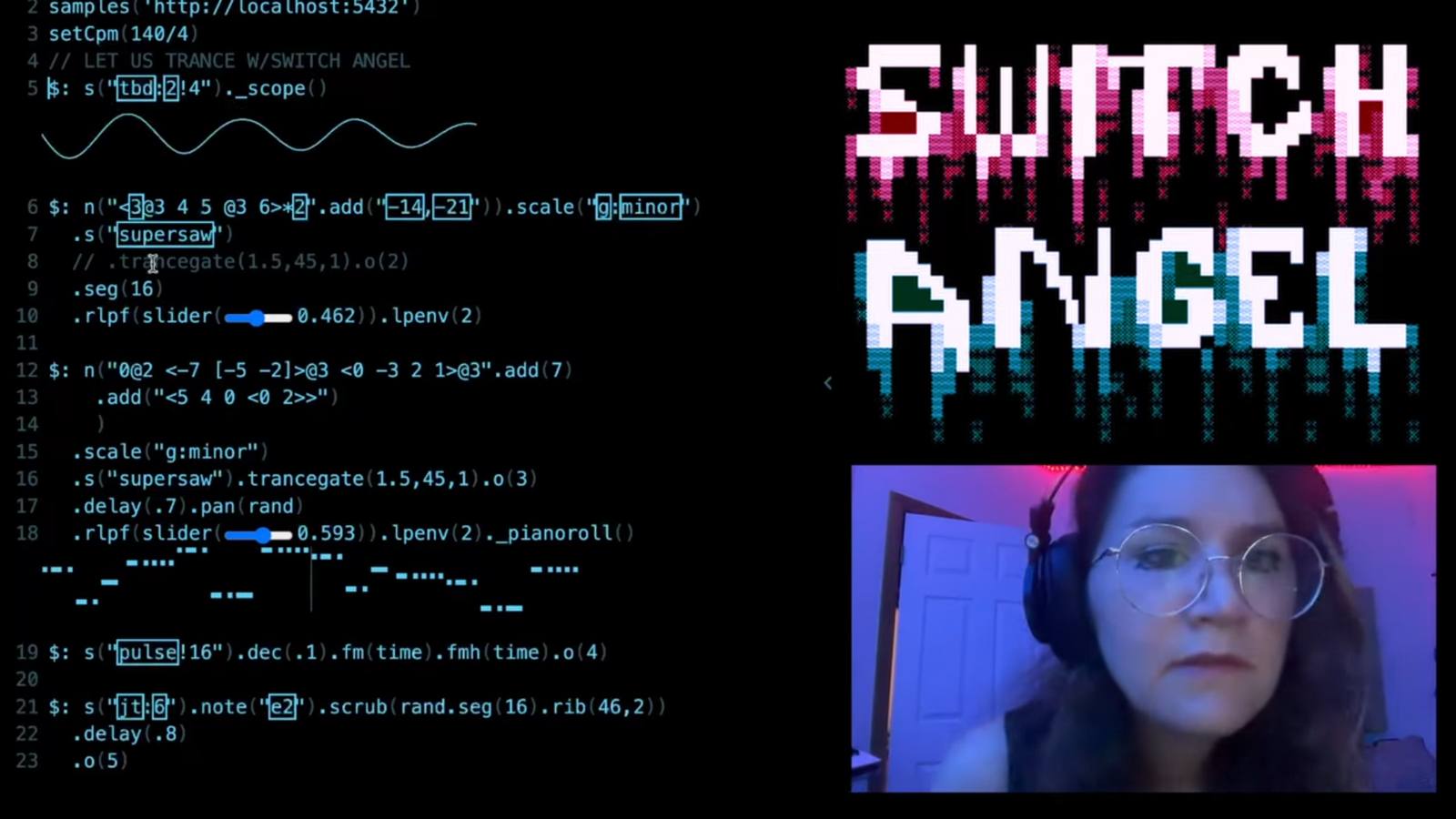
The super talented [Switch Angel] is an electronic music artist, with a few cool YouTube videos to show off their absolute nailing of how to live code with Strudel. For us mere mortals, Strudel is a JavaScript port of TidalCycles, which is an algorithmic music generator which supports live coding, i.e. the music that is passed down to the synthesizer changes on-the-fly as you manipulate the code. It’s magical to watch (and listen!) to how you can adapt and distort the music to your whims just by tweaking a few lines of code: no compilation steps, hardly any debugging and instant results.
The traditional view of music generators like this is to create lists of note/instrument pairs with appropriate modifiers. Each sound is specified in sequence — adding a sound extends the sequence a little. Strudel / Tidalcycles works a little differently and is based on the idea of repeating patterns over a fixed time. Adding an extra sound or breaking down one sound slot into multiple sounds squeezes all the remaining slots down, causing the whole pattern to repeat in the same period, with the sounds individually taking up less space. This simple change makes it really easy to add layer upon layer of interest within a sequence with a few extra characters, without recalculating everything else to fit. On top of this base, multiple effects can be layered—more than we can mention here—and all can be adjusted with pop-in sliders directly in the code.
You see, the code is also the visualizer. As the sequence runs, the notes and time periods are highlighted, with piano rolls and oscilloscope views adding to the visuals to help guide you. Tweaking the various components of the sound composition in real time with embedded sliders is a quick and easy way to smoothly hear the impact of settings. It just makes sense. Additionally, since Strudel is written in JavaScript, you can pull in external libraries of customized functions to make your code more straightforward to read, like this short library from [Switch Angel].
On the back end, the built-in web-based synthesizer is basic but functional for roughing out. Still, for absolute control, you’re going to want to send the notes over to something like SuperCollider or Sonic Pi. This is easy because Strudel supports OSC, making it a simple, configurable item.
If you were thinking that you’ve seen a JavaScript-based generative music thing before, you’d be right. Whilst we’re thinking about generative music and generative art in general, what about having a look at this neat sound-and-light sculpture?
Thanks to [JohnU] for sending this in!
This articles is written by : Nermeen Nabil Khear Abdelmalak
All rights reserved to : USAGOLDMIES . www.usagoldmines.com
You can Enjoy surfing our website categories and read more content in many fields you may like .
Why USAGoldMines ?
USAGoldMines is a comprehensive website offering the latest in financial, crypto, and technical news. With specialized sections for each category, it provides readers with up-to-date market insights, investment trends, and technological advancements, making it a valuable resource for investors and enthusiasts in the fast-paced financial world.
